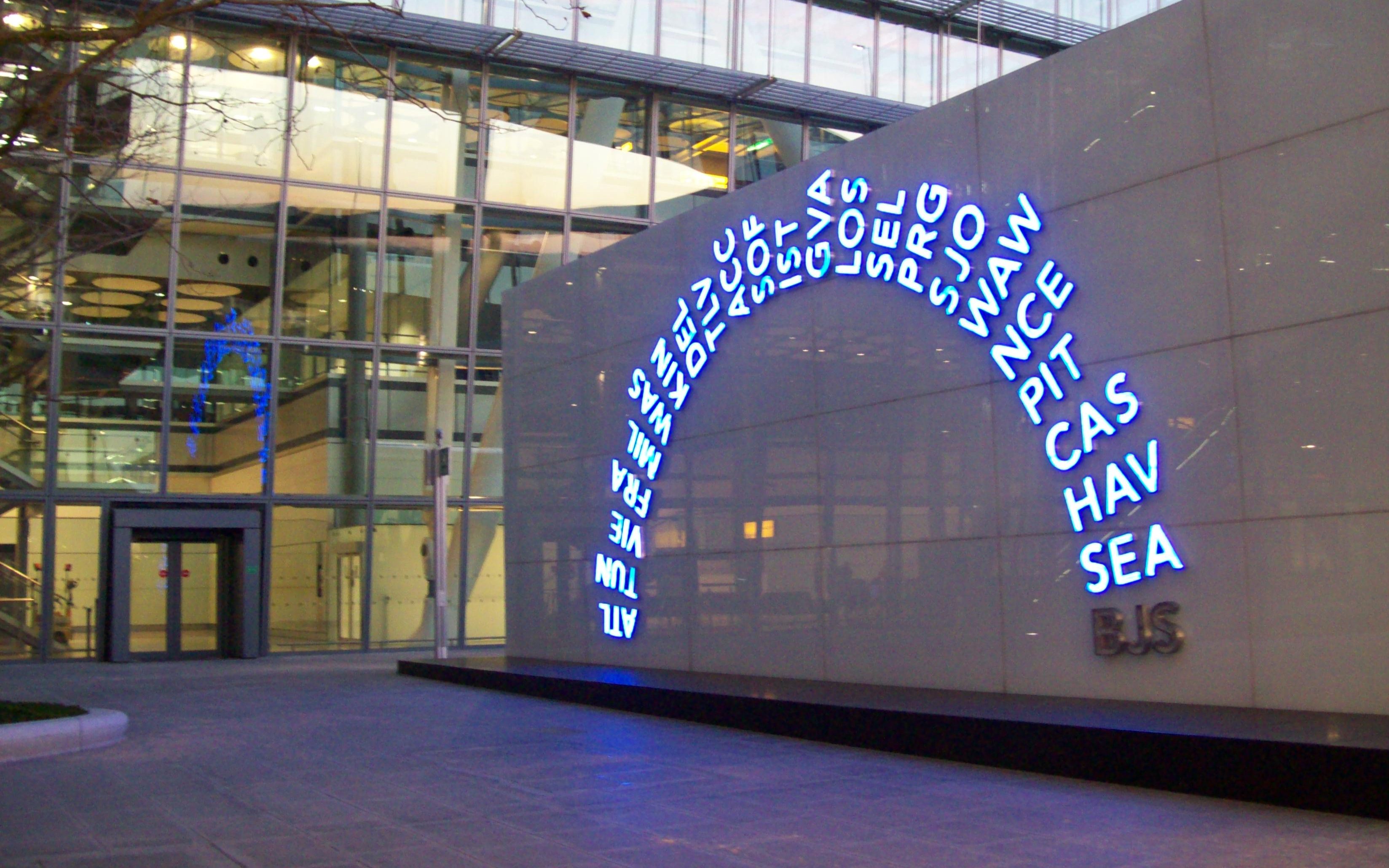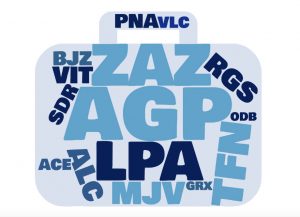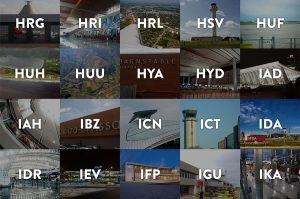
Everybody is familiar with the ubiquitous ‘three letter codes’ used to designate airports. It’s impossible not to see them on luggage tags, tickets or booking websites. Ferrovial Airports also uses codes such as LHR (London-Heathrow), SOU (Southampton), GLA (Glasgow) or ABZ (Aberdeen) on its airport assets. Although in our case the codes seem a clear abbreviation of the airport’s name, in many other cases this rule doesn’t hold true and the codes can become a bit of a puzzle. The case of Málaga, for example, which has the code AGP, of which more later.
How does IATA assign its codes?
 Codes are assigned by IATA (International Air Transport Association) since 1930 to identify the world’s airports in short form. Initially, the two-letter codes of weather stations were used, or any other local convention. The 26 letters of the Roman alphabet provide 17,576 different permutations. Today, there are more than 10,000 commercial airports in the world using IATA codes. And although there isn’t a common pattern to fit all codes, some of the guidelines used by IATA seem obvious:
Codes are assigned by IATA (International Air Transport Association) since 1930 to identify the world’s airports in short form. Initially, the two-letter codes of weather stations were used, or any other local convention. The 26 letters of the Roman alphabet provide 17,576 different permutations. Today, there are more than 10,000 commercial airports in the world using IATA codes. And although there isn’t a common pattern to fit all codes, some of the guidelines used by IATA seem obvious:
- The general rule is to use the first letters of the name of the city in which the airport is located: BOS = Boston, MAD = Madrid.
- If a city has several airports, the name of the airport is used: JFK = John F. Kennedy International Airport (New York), LGA = LaGuardia Airport (New York).
- Some cities use the old two-letter meteorological codes: LAX (Los Angeles) uses the old code LA (its initials) with an X to make it three letters. In the same way, PDX = Portland and PHX = Phoenix.
- Sometimes, alternative names are used: EAS (San Sebastián) comes from Easo (traditionally, it was thought that the old Roman city of Easo/Oiasso was located there). XRY = Jerez de la Frontera, from Sherry/Xherry (Jerez).
- In the case of cities having the same name and each having airports, the codes must be different to avoid confusion: SJC = San Jose, California (United States) and SJO = San José (Costa Rica).
- When there is a shared airport for various municipalities or regions, the names are sometimes combined: DFW = Dallas-Fort Worth.
- In some cases, the airport’s previous designation is used even if its name has since changed: ORD = O’Hare because its old name was Orchard Field.
- Some letters are reserved for US airports, a rule which is only applied there: N for the Navy and W and K for the Federal Communications Commission for radio broadcast stations. Thus, ORF = Norfolk (Virginia) rather than NOR, which identifies Nordfjordur (Iceland). In the same way, IAD = Washington-Dulles and DCA = Ronald Reagan Washington (District of Columbia Airport), because it can’t begin with a W.
- Internationally, codes beginning with a Q are reserved (it’s used as a letter for communications), in such a way that UIO = Quito (Ecuador) because it cannot be ‘QUI’.
- In Canada all airports begin with the letter Y: YOW = Ottawa, YQB = Québec. There are more than 30, from YAZ (Tofino) to YZF (Yellowknife), although there are also secondary airports and aerodromes that start with W, X and Z.

AGP (Málaga), a code with a history
Some believe that AGP refers to the ‘Roman temple of Agrippina’ (which was in Rome actually, rather in Málaga), or to the abbreviation (in Spanish) of ‘Great Picasso Airport’, Málaga being the artist’s birthplace. However, the explanation is much simpler: when IATA started assigning codes, MAL was already taken by the airport on the island of Mangole in the Moluccas (Indonesia) and so were MAA (Madras, India) and MAG (Madang, Papua New Guinea). And so it was necessary to resort to using just two letters, adding another one which was still free to complete all three, so AG was chosen, adding the ‘P’ at the end because the Q, which other airports like Sevilla (SVQ) or Santiago de Compostela (SCQ) use, would make AGQ which was already assigned to Agrinio (Greece). So, if you want to know more about the airports behind these codes, check out the complete list on the IATA website. To learn a bit about their history, go to Airport Cod.es, although in some cases the explanation may sound more the stuff of legends than a true story.






There are no comments yet